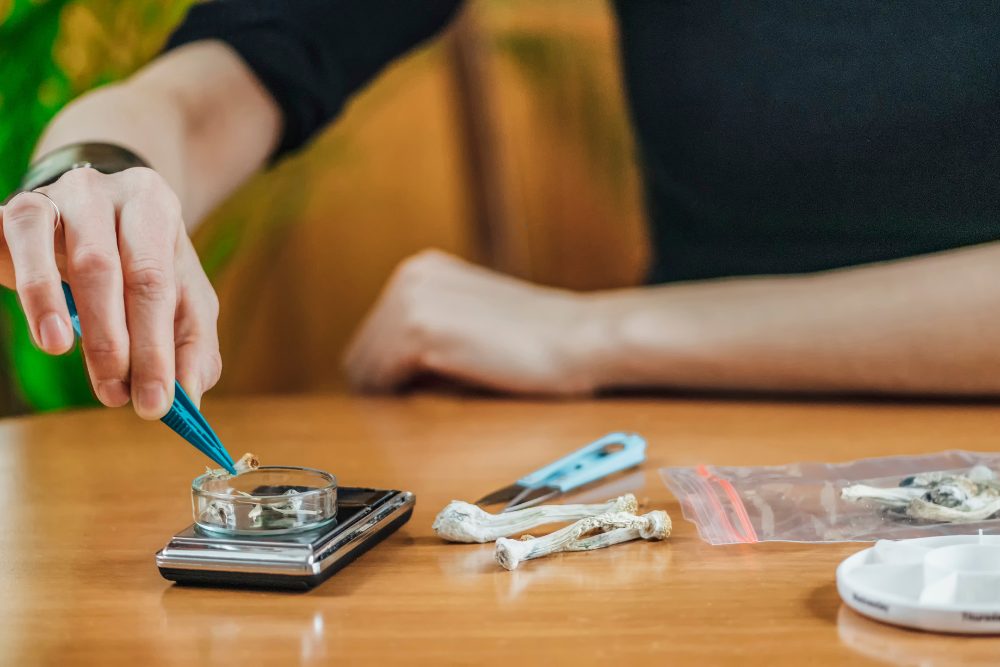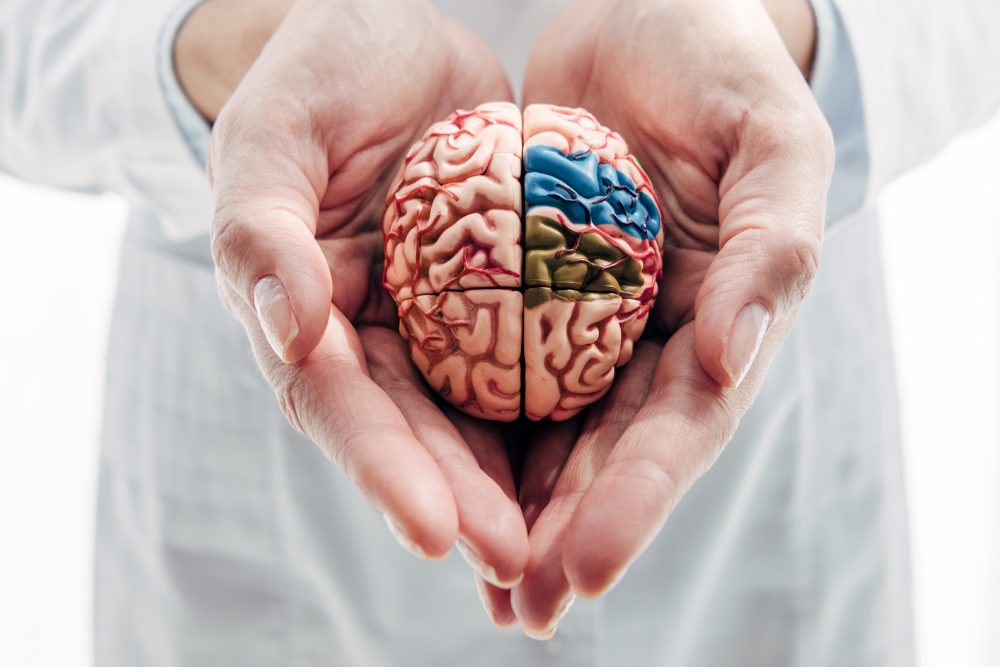
One of the first thoughts that come to mind about psychedelics and cannabis is the mind-altering, euphoric high they induce. The concept of “getting high,” a term widely associated with cannabis and hallucinogenic drugs, was typically reserved for rituals and traditions in various cultures and civilizations worldwide, think ayahuasca rituals in Peru.
In the United States, psychedelics and cannabis are drugs widely associated with deviant behaviors that eventually led to drug policies that restricted use and outright banned possession. These restrictions are now barriers to modern-day research and development of new medicinal therapies that offer fewer side effects and more promising results than many medications.
Today, many people use marijuana and psychedelics to treat various medical and mental health conditions, such as depression, anxiety, nausea, inflammation, and pain.
It is becoming increasingly common for individuals suffering from the negative impact of antidepressants and other medications to incorporate psychedelics and cannabis into their treatment plans. It’s also highly prevalent for individuals with mood disorders to avoid conventional treatment altogether and rely solely on cannabis, psychedelics, or both for self-management.
Current and mounting evidence suggests that psychedelics may be a better big pharma treatment alternative than cannabis for pain, depression, and other health symptoms and vice versa. Despite these promises, it’s beneficial for adults to understand how they may benefit from medicating with psychedelics, marijuana, or both.
Historically, it was thought that the brain and its neural connections were fixed and unchangeable and that most of the brain’s development occurred before adulthood. However, it wasn’t until 1948 that Jerry Konorski, a polish neuroscientist came up with the concept of neuroplasticity. Scientifically, neural plasticity, another term for neuroplasticity, refers to how the neural network in the brain and nervous system processes and responds to stimuli.
Certain, localized regions of the brain’s neural functions and the nervous system are immutable. Yet, some areas are changeable and can modulate specific functions, restructure themselves, and carry out new actions. These features are reportedly enhanced by cannabis or certain psychedelics.
Neural plasticity can be divided into four classes: compensatory masquerade, map expansion, cross-modal reassignment, and homologous area adaption.
Neural plasticity is considered a determining factor in how psychedelics and cannabis, amongst other drugs and chemical substances, interact with the mind and body and influence behavior. Researchers believe these substances are vital to understanding the cause of positive, healthy behaviors and negative, unhealthy ones like addiction or substance abuse.

When introduced to the brain, psychoactive substances like mushrooms (aka shrooms), ketamine, and cannabis interrupt normal neurotransmitter function. Specific pathways and stimuli are necessary for regular neurotransmitter activity to process, communicate, and regulate chemical signals to sustain proper body and brain function.
Cannabis has properties or molecules known as cannabinoids that are chemically similar to some of the neurons and receptors in the human brain and body. They attach to these receptors to activate, stimulate, and modulate natural neuron activity.
The brain’s addiction center, also known as the reward system, encompasses the basal ganglia, extended amygdala, and prefrontal cortex. These are the areas that are most altered by chemical substances like psychedelics and weed. These regions are activated or stimulated most by the presence of specific addictive substances like weed and LSD or ketamine.
The reward-addiction center is also responsible for the different types of intoxication or high produced by alcohol and other drugs. Changes induced from repeat or chronic drug use can also alter essential life-sustaining functions of the body.
It is believed that the dangers of prolonged use and misuse of these substances alter critical regions of the brain and trigger permanent abnormalities in body functions and thought processes while increasing susceptibility to compulsive behaviors and addiction.
Currently, studies are limited on cannabis’ impact on the brain’s neural plasticity, but evidence suggests that it has a neurogenesis effect. It promotes the creation of new brain cells and chemical pathways in the brain. The neurogenesis capacity of marijuana on the brain is reportedly short lasting.
Despite its intoxicating impact on the mind, many people confuse cannabis as a type of psychedelic when it’s not. Yet, there is research underway to determine if marijuana has been misclassified due to its euphoric-like properties and its usefulness in alleviating dark moods, depressing thoughts, and many mood disorders. These are similar to the effects of psychedelics.
One clinical study on Cannabis and PTSD suggests that marijuana could be a potent therapeutic for the mental health community. Noticeable PTSD symptom improvements were achieved after three weeks of treatment with different THC and CBD concentrations and placebo with negligible amounts of both CBD and THC.
THC is a cannabinoid found in the cannabis sativa plant that is responsible for the intense and hallucinogenic symptoms associated with marijuana use. Cannabis is also full of other cannabinoids, notably CBD, CBG, and CBN, that are less psychoactive.
Users can control their high by micro-dosing with psychoactive cannabis strains or CBD if they start to feel uncomfortable or experience adverse complications. CBD is a cannabinoid that counteracts much of THC’s psychoactive effects to reduce unpleasant sensations associated with weed.
Marijuana also has neuroprotective properties that help shield the brain from harmful stimuli and toxins. While beneficial for overall brain health and function, in some areas, such as learning, not so much. Studies show that short-term cannabis use slows activity in the prefrontal brain and lowers memory retention and learning capacity. The neuropsychological decline is often temporary but may become permanent with long-term or chronic marijuana use.
THC, the main psychoactive compound in cannabis, disrupts neuroplasticity in the hippocampus and other parts of the brain in some individuals, but not all. Moreover, these effects are likely to be permanent in adolescent cannabis users whose brains are still developing by the time they reach middle age.
The therapeutic effects of DMT, mushrooms, ketamine, LSD (lysergic acid diethylamide), and certain psychedelics on mood disorders and behavioral issues are well documented. In moderation, they can promote brain neuroplasticity by increasing cognitive function and alleviating depression and anxiety. Moderation and low doses also decrease the addictive effects normally associated with these substances.
Psychedelics currently being studied for medicinal purposes include:
Psychedelic drugs like those listed above have a restorative effect on the brain. They create new pathways and enhance neuron activity to regulate cellular processing and communication. Due to these effects and growing medical and scientific evidence, ketamine, LSD, and other psychedelics and marijuana are no longer widely viewed as deterrents to mental and physical health.
Psychedelic drugs also influence moods and, in some cases, alleviate pain and other adverse health symptoms. However, their long-term or permanent effects on the mind and body are not known due to limited clinical research studies.
Research is heavily underway to determine whether these substances’ antidepressant, anti-addictive, and anxiolytic properties can live up to their promising potential and pave the way for a new generation of safer therapeutics for mental health disorders, such as depression, anxiety, and addiction.
Introducing cannabis or psychedelics to the body disrupts the brain’s pleasure or reward system. Reportedly, narcotics and particular psychedelic or euphoric drugs overload the pleasure center with higher than average amounts of feel-good inducing neurotransmitters. This also increases the amount of dopamine in the brain and strengthens the correlation between substance use and positive or euphoric response. It basically increases the positive association with potentially unhealthy behavior such as drug use.
Dopamine is the primary neurotransmitter responsible for the activity or action reinforcement. Though little evidence exists supporting this theory, most in the scientific community believe that dopamine spikes help enforce memory and recollection and are a driving force in addiction and behavioral patterns.
Large influxes of dopamine triggered by psychedelics or marijuana use reportedly rewire the brain to seek and prefer drug-based chemical interactions instead of healthy or more positive stimuli or behaviors. It also interferes with the user’s perception of daily life. Prolonged and improper use teaches the brain to trigger urges for these substances from regular activities and events long after cessation.
This theory is how addiction starts in the brain and why it’s important for those recovering from substance abuse and addiction disorders to seek out professional help so they can learn suitable coping skills to overcome their urges. Their chronic use or misuse of weed or psychedelics rewires their brains because of the false-positive connections associated with their core memories.
The risk of addiction is all too real for some people who use cannabis or psychedelics. Still, an overwhelming majority of individuals rely on these substances to improve their moods, perception, and health. Many do not develop addictive associations or behaviors.
Both cannabis and psychedelics alter body processes based on how they stimulate specific neurotransmitters and receptors. However, psychedelics primarily interact with 5-HT2A receptors to alter perceptions and brain function, whereas cannabis interacts primarily with CB1 and CB2 cannabinoid receptors. These pathways affect movement, cognition, reward, motivation, neuroendocrine control, executive function, and many other physiological and behavioral processes.
The presence of these receptors in different regions of the brain either stabilizes or enhances dopaminergic activity. Because they influence brain chemistry and activity, psychedelic drugs and possibly marijuana can also be classified as any of the three types of hallucinogens.
Most of these changes take place in the prefrontal cortex. Certain regions of the brain are highly plastic, meaning they can change their structure and function. This is normal, but in individuals with neurological disorders, neural plasticity may hold the key to why some people experience that trippy and mind-altering sensation when they use cannabis or psychedelics, and others don’t. Researchers believe these interactions may also help them determine why some people develop or are more vulnerable to mental health conditions and others aren’t.
It is widespread practice for some individuals who self-medicate with either cannabis or psychedelics to mix the two substances to enhance their experience. Marijuana acts upon cannabinoid receptors in the brain and body that changes the user’s perception of time, reality, space, and thinking. Hallucinogenics like LSD and mushrooms also trigger the same feelings. But they are often amplified or reduced depending on the amount of THC or cannabis strain mixed in.
High THC strains, when mixed with psychedelics, reportedly increase the risk of negative feelings, sensations, bad experiences, or “trips.” Whereas low THC strains reportedly have the opposite effect. Both medical weed and psychedelics alter perception and cognitive function by modulating neurotransmitter activity (primarily serotonin and dopamine) in the brain.
Thinking about mixing weed with magic mushrooms or psychedelics, learn what not to do here: Combining the Therapeutic Powers of Cannabis and Psilocybin
Currently, over 40 million people are living with medical conditions that cause persistent or chronic symptoms despite treatment with standard pharmacology medications. Mental health and many neuropsychiatric diseases cause symptoms so severe or debilitating that they are a primary cause of disability worldwide.
Though conventional meds, such as Zoloft, Wellbutrin, and other antidepressant drugs are effective for some individuals, their effects are not immediate and often take several weeks to produce positive results. During that time, as patients wait to experience a decrease in their symptoms, they often experience side effects that make them feel physically worse.
Psychedelics and cannabis both enhance the brain and nervous system’s ability to change activity and response to essential and nonessential stimuli by reorganizing their structure, functions, or connections. Their positive impact on neural plasticity and potential neurogenetic properties could lead to the development of cures and more effective treatments for mood disorders and medical conditions.
Both marijuana and psychedelics show promise for the future of medicine. But they both, like many substances, can cause undesirable effects in some individuals. In the medical patient community, many people prefer cannabis and psychedelic medicinal therapy because of the lower risk of side effects. Most of those effects are widely accepted amongst patients as more manageable and tolerable than those associated with conventional medications and standard treatment options.

There’s no definitive way to determine how you’ll experience the effects of marijuana or psychedelics without personal use or experimentation. Both substances affect everyone differently. Yet, the patient is the most important factor that influences treatment efficacy or hallucinogenic effects.
No two people have the same genetics, physical profile, or responses to pain and illness. Similarities are common with many medical symptoms and conditions and mental health disorders. However, what works for some, doesn’t necessarily work as well or enough for others.
Despite the failed war on drugs, some substances, such as cannabis and psychedelics, remain quite popular due to their therapeutic and hallucinogenic properties. In response to new evidence emerging over the years from the scientific community and positive claims from medical patients, it’s becoming clear that both substances could be beneficial to the mind and body when used in moderation. This has lead to some states decriminalizing marijuana and allowing doctors to study the effects of hallucinogenic substances.
If you plan to self-medicate to relieve depression, anxiety, nausea, pain, fatigue, appetite, etc., keep an open mind about alternative treatments and drugs with psychoactive properties.
Here’s what you need to know if you plan to take Cannabis and Psilocybin While on Antidepressants
MarijuanaDoctors is all about dosing responsibly. To learn more about psychedelics or medical marijuana and how they benefit your situation, check out the following topics:
Everything You Wanted to Know About Psychedelic Cannabis
Psilocybin Oral Strips May Help Depression
Don’t forget you can always visit your local dispensary to talk with a budtender for cannabis strain and product recommendations.
No Information on MarijuanaDoctors.Com should be used to diagnose, treat, prevent or cure any disease or condition. You can view our Full Disclaimer here.